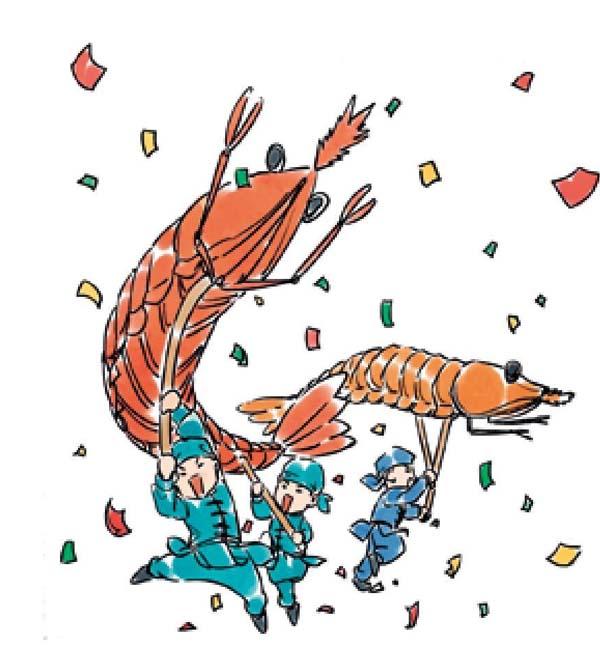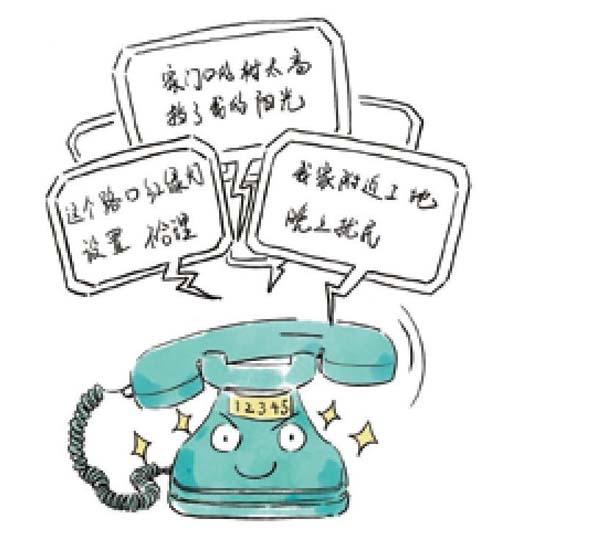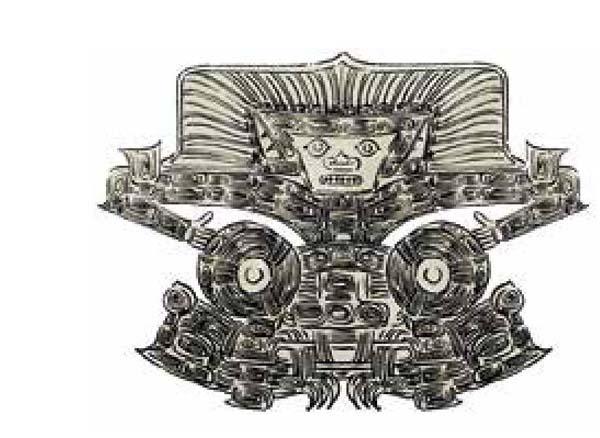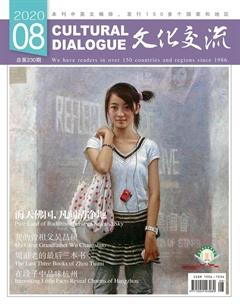在段子中品味杭州
林琳



最近,华云文化与浙江工商大学出版社联合推出一部《杭州有意思》。说起来,这书还真有点意思。近300个段子,从南宋古城遗迹侃到眼下风起云涌的互联网电商,从百岁老人王桂花的名字探究到杭州市花的由来,从小小街頭面馆到方言“好汉不赚六月钿”的解读,从荷花初绽登上报纸头条到几个曝料人引发的一场暗战……与杭州有关的林林总总,八卦小日子还是风雅趣事儿,都能在书里找到。不夸张地说,就是一部关于杭州的“段子体”生活百科。
有的段子虽然只有寥寥几笔,看似漫不经心,却又直击命门,让你立马升腾起一股被说到点子上的认同感。读着读着,又仿佛被挠了痒痒一样,不小心偷偷笑出声。
那么,我们就选取《杭州有意思》里的一些段子,一起来品味杭州吧。
理所应当与刚刚好
夏天,“理所应当”的热。
冬天,“理所应当”的冷。
春天和秋天,“理所应当”的美不胜收。
当然还有“理所应当”的堵车,“理所应当”的高房价,“理所应当”的摇不到车牌号,“理所应当”的排队吃饭……
所有大城市的“理所应当”,杭州“理所应当”也拥有。
可是相比其他城市,杭州是“理所应当”得刚刚好。
半城山水,满湖烟雨,刚刚好。
堵车时转头看见街心花园的郁金香,刚刚好。
城市越来越大,却又没那么大,刚刚好。
脚步越来越忙,却能一走就走到西湖边,刚刚好。
事情越来越多,但还能容下几间二十四小时的书店,刚刚好。
人行横道线刚刚好。
西湖刚刚好。
你和我的爱,刚刚好。
我的城,刚刚好。
倒扣香炉与三潭印月
西湖里最为著名的标志性建筑,当然是三潭印月的那三座小石塔。
我小时候看过一本《西湖民间故事》,这本流传甚广的民间传说故事集里讲,西湖上矗立的这三座小石塔,其实和鲁班有关……
说是鲁班带着妹妹来到杭州,结果西湖里一个黑鱼精看中了鲁小妹,要抢走去压舱,不然就兴风作浪为害人间。鲁班带着徒弟在宝石山上凿了一个大香炉,把黑鱼精倒扣在西湖里,救了全杭州的人。香炉的三只脚,就成了三潭印月这道美丽的风景……
还有另一个版本,也是黑鱼精作乱,这里是观音娘娘用个大香炉扣住了黑鱼精。
总之,民间传说,这三座塔就是一只倒扣香炉的三只脚!香炉下面就是一个黑鱼精!
这只香炉该有多大啊……而更有意思的是,这三座塔在湖面上形成一个正三角形,塔与塔之间相距约62米。
可以。“六二”这个数字,非常杭州。
三潭印月的三座塔大名鼎鼎,但很多人不知道的是,看起来浑然一体的塔,其实是像积木一样搭起来的:从下往上依次包括塔基、塔身、宝盖、六边小亭、小宝盖。它们都是靠重量保持稳固,只有葫芦状宝顶用榫卯结构——通过榫卯,宝顶与上层塔檐牢牢相连。这葫芦宝顶有一个有意的倾斜,大约一度,是为了让塔顶更牢固。
四百年过去了,石塔们还好好地站在湖面上。不过,最近三十年,数得出来的,这塔就倒过三次。还有杭州市民说,20世纪70年代,他在塔边上拍照片,就把石塔的葫芦顶蹬下来过……最近一次,则是2013年,有一艘游船撞倒了其中一座石塔,塔基以上全部落入水中。2013年,信息传播手段已经相当发达,全城人民都关注了事件的进展,有整整一周的新闻主角都是它。
这次抢修花了整个通宵——把倒下的部件从水里捞出来,原样搭回去了,一点看不出来被撞倒过。
关于西湖第一朵荷花的“暗战”
杭州的夏天,荷花是当之无愧的主角。
2005年第一朵荷花开的时候,笔者供职的《都市快报》做了一篇醒目的头条稿子。正好著名报告文学作家陈祖芬也在杭州,看到了这篇稿子,很激动。后来,她在著作《杭州的现代童话》一书里专门写了这件事,说:“不知道还有哪个城市会这样,把荷花初绽列为头条新闻?杭州会。这种对美的希冀和对美的体会!”
从这一年开始,杭州第一朵荷花开放就成了一件盛事。2006年,《都市快报》还为当年这朵荷花建了一个博客,每天拍一张照片,给大家下载当桌面。后来,干脆设立了一个摄影比赛,叫“西湖荷赛”,参加者甚众,搞得初夏时分,小荷才露尖尖角,西湖边就挤满了长枪短炮——嗯,当然,西湖边啥时候不挤满长枪短炮呢?
这每年的第一朵荷花,多半开在西泠桥附近,早两年,都是杭州市民周大伯发现,然后向所有媒体报料的。有位冯先生就不服气了,为什么不是他第一个发现呢?2007年初夏的时候,冯先生下了一个决定,买通西湖边的保安,第一朵荷花开的时候立刻给他打电话,他要做那一年的荷花代言人!结果保安笑眯眯地说:周大伯老早来约过啦,你迟了。
冯先生一生气,打电话给媒体报料,报料内容是“关于西湖边第一朵荷花的暗战故事”。
这一天,是2007年5月15日。5月18日早上6点,有人报料西湖边第一朵荷花开啦。报料人既不是冯先生,也不是周大伯,而是一位天天在西湖边散步的任叔叔。
一句话证明你是老杭州
“我去虎跑泉打过泉水。”
没错,即便是我,都没有在杭州干过这件事。这是真正的老杭州才会做的事:黎明即起,带着矿泉水桶坐公交车到虎跑泉去打水。毕竟,只有喝过用虎跑泉水泡的龙井茶,才算真正地喝过龙井。
这不是一件轻松的活计,在虎跑泉的取水口,有时候光排队就要排四五个小时,可见中国人为了喝一口好茶能有多拼。像《红楼梦》里的妙玉肯定是不愿意和大伯大妈们挤起来排队取水的,所以她只好另辟蹊径,收一点梅花瓣上的雪水了,也难怪这么珍惜,要把水埋在梅花树下。
去虎跑泉取水的大伯大妈们要豪迈得多,水桶都尽可能带多带大,即便排很长的队,也不吵不闹。对他们来说,这就是他们的社交现场,话题就像取之不尽的虎跑泉水,生生不息,又不紧不慢。
虎跑泉水到底有多甘洌?谁喝谁知道。
不断的断桥与网红西泠桥
白娘子是西湖永远的代言人。
她太红了,以至于西湖边出现了一种新的周边商品:里面嵌着白娘子画像的棒棒糖。这款棒棒糖叫“解救白娘子”,要把白娘子解救出来,只能吃完糖啦。
这种糖卖得很好。大家很乐意解救一下白娘子。
同样卖得很好的还有那种小绸伞,应该也是托了白娘子的福,她和许仙有一个断桥相会送伞还伞的故事嘛。
说到断桥,很多外地游客想知道为啥它叫断桥,明明不断啊!
“断桥不断,长桥不长”本来就是关于西湖的一句老话啊。西湖十景之一的“断桥残雪”,名气大归大,其实大家也没怎么看见过。夏天的时候,断桥边的荷花倒是开得特别美。
作为西湖著名的地标之一,假日里,断桥上全部都是“人人人人人人人人人”。
这里早就不许通车了,据说是因为实在不能再承受车子的压力,怕真的会断。
西泠桥之所以那么红,主要是因为它的地理位置绝佳。
南宋周密在《武林旧事》中是这么给大家规划“一日游”路线的:“若游之次第,则先南而后北,至午則尽入西泠桥里湖,其外几无一舸矣。弁阳老人有词云:‘看画船尽入西泠,闲却半湖春色。盖纪实也。”你看,这里被点名提到的就是西泠桥。周密还特别指出,午后,西湖上的船都通过西泠桥进到北里湖了。
说起来,也只有在北里湖,才能看见西泠桥桥身上的三个字——“西泠桥”。这三个字刻在桥身上,不是很明显,所以不太有人留意。
据说很多年前,这三个字里面是填过颜色的,但没人说得出是啥颜色。为了让游人能注意到这三个字(“打卡”的时候至少能一目了然啊),2019年,西湖景区打算给这三个字填色。
填色之前,先在报纸上请杭州市民海选填什么色。大家给了很多意见:青荷色,显然是要搭荷花;落霞红,因为西泠桥为看落霞绝佳之处;选正红的也不少,觉得像“孤山”(正红)那样也很大气。
最后填的那个色,是石青色。
石青色的西泠桥,在等你来。
“刷”西湖与“西湖玫瑰跑”
杭州史上有好几任相当有名的父母官,最有名的莫过于苏东坡和白居易。
西湖上最有名的两道“风景线”,一道是苏堤,一道是白堤,正与这两位父母官有关。不过,成因倒有不同。
苏堤踏踏实实的,是苏东坡在杭州任知州时,疏浚西湖,利用湖底的淤泥构筑,再经历岁月演变而成的。杭州人为了纪念苏东坡,把它命名为苏堤。“苏堤春晓”在南宋时就已经是西湖十景之首了。到了元代,这“六桥烟柳”被列入钱塘十景,可见人们是有多喜爱它。
而白堤则是早在唐朝时,为了蓄湖水灌溉农田兴建的,后世人们以为这是白居易主持修筑的,就称它为白堤。其实不是啦,白居易在杭州主持工作时,倒是在旧日钱塘门外的石涵桥附近修了一条堤,叫白公堤,现在已经不存在了。
不过无论如何,人们还是愿意把这两条堤,分别与苏东坡和白居易联系在一起。西湖啊,本来就是由诗词荡漾而成的啊。
西湖作为著名景点,一般人都会觉得湖边围满了外地人,而本地人应该不太去湖边。
其实不然。一方面,西湖就在市中心,本地人办个事很可能会经过西湖;另一方面,很多人早些年可能还觉得去湖边算是一件事,这几年,运动风气盛行,整条苏堤半条白堤都禁止机动车出入,“刷”西湖渐渐成为一种时尚。
很多资料上都写,西湖周长约为15000米。其实是不到的。“刷”西湖的经典线路,从西湖天地这里出发,过长桥,经雷峰塔,再拐入苏堤,一路疾行,翻过六座桥,经过晚上就会歌舞升平的“印象·西湖”现场,再右转走过一小段湖边,经过偶有人凭吊的苏小小墓,翻西泠桥,沿白堤一路赏景到断桥,再沿着湖边走,运气好可能会碰到音乐喷泉,集贤亭也值得驻足略观,最后回到西湖天地,这一圈,是10700米。如果走大圈,不从苏堤穿过西湖,而是绕去杨公堤,我走过一次,超过13000米。这两个圈的长度,无论是跑步还是走路,都是刚刚好,能出一身汗,又不至于太累。
这几年,还流行用运动软件画步行轨迹图,西湖的形状加上里面两条堤,看起来刚好像一朵含苞待放的玫瑰花。这下好了,每年情人节都有很多人进行“西湖玫瑰跑”,从虎跑出发,一张图跑完,差不多23000米。用一个半马的距离证明爱情,这波操作,也是很杭州了。
Interesting Little Facts about Hangzhou
By Lin Lin
Hangzhou is a fascinating city and many people have their ways to relate what they know about the city. I have just published a book about interesting little facts about Hangzhou where I was born and raised. The book is full of interesting facts and stories and my personal impressions and comments, which may sound a little bit subjective. Certainly this book is an account of my perspectives. I am aware that other peoples perspectives may differ and be equally interesting and their collections of interesting little facts and impressions and comments may differ too. Thats all right.
The following is a brief report of some interesting little facts and anecdotes, my impressions and comments, all in one.
It can be taken for granted that summer days of Hangzhou are insanely hot and winter days of Hangzhou are uncomfortably chilly. Spring and autumn offer a huge kaleidoscope of beautiful days and nights. This can also be taken for granted. There are many such things that can be taken for granted in Hangzhou: traffic jams, exorbitant property prices, hard-to-get car plates, long lines in front of restaurants. But the city just gets a lot of things right: it is just right to see half of the city are a huge garden of mountains and rivers and the lake where rains and mists often give an additional touch to your heart and soul; it is just right when you are in a traffic jam and then you turn your head and see tulips blooming in a street park; the urban sprawl never stops but you feel the citys size is just right; you always run a tight work schedule and then you can always find time to goof around the West Lake because the lake seems just a stones throw away; even if you just cant find time to get all the things done fast enough, the city has some 24/7 bookshops where you can hang out leisurely; it makes people feel all right when cars and buses stop for you to walk on the zebra lines and cross the street; you feel you are blessed to have the West Lake near you; and you even feel its the city that makes love occur at the right time and in the right place and in the right way. And many residents in Hangzhou feel that the city is exactly what a city should be. The city is perfect.
Photographing the first lotus flower on the West Lake has been a war for professional and amateur photographers since 2005. City Express, a local newspaper in Hangzhou, made a headline of the first lotus flower blooming on the West Lake in 2005. Since then, photographers have vied each other in shooting the best photo of lotus flowers. In 2006, City Express launched a blog which uploaded one lotus flower photo a day. The photos were so good in quality that they could be downloaded and installed as screensavers in a computer. Then the daily newspaper launched a photography competition for best lotus flower photos. Nowadays, in early summers, take a stroll around the West Lake and you can see a lot of cameras around lotus habitats. But again, when do you not see photographers everywhere around the lake?
In 2005 and 2006, a man named Zhou phoned City Express and reported the first lotus flower he had just spotted. The first lotus flower on the West Lake in these two years bloomed near the Xinling Bridge. In 2007, a resident surnamed Feng decided to be the one that year to spot the first lotus flower on the West Lake. So he tried to bribe a security guard whose workplace was near the bridge, asking the guy to tip him first. The security man grinned and told Mr. Feng that Mr. Zhou had already asked him for the tip. Enraged by the fact that he didnt get the privilege of knowing it first from the security guard, Feng phoned the newspaper on May 15, 2007 and ratted Mr. Zhou out for his “underhand” arrangement, saying it was a secret war about the first lotus flower.
At six oclock on the morning of May 18, someone called the newspaper reporting he had just spotted the first lotus flower. It wasnt Mr. Zhou. It wasnt Mr. Feng. It was a middle-aged man surnamed Ren who took a stroll around the West Lake every morning!
Say one thing you have done in Hangzhou to prove you know Hangzhou well enough. I think this one tops all other arguments: I fetched water home from Tiger-Running Spring. A lot of natives of Hangzhou have never ever done that, though so many local residents know about this crazy yearning of fetching water from the spring and making a cup of tea. Most that have done this crazy thing are probably old-generation Hangzhou natives. Back then, one got up early, carried some plastic gallon pails, and took a bus to the Tiger-Running Spring. Some people still go all the way to fetch water nowadays. As there were so many people waiting in a queue for getting water dripping out of rocks, there was usually a long line and people stood for four or five hours until it was their turn. They didnt make big noises. For many people standing in line, it was their socializing moment. They were quiet and enjoyed chatting with their neighbors in the long queue. For some people in Hangzhou, your cup of Dragon Well Tea isnt all right if it is not made with the water from Tiger-Running Spring.
Xiling Bridge that connects the North Hill Street with Solitary Hill has its name carved on the bridge. But most people dont notice the name. It is said that the three characters were once painted, but nobody remembered exactly what the color was. In 2019, the government department in charge of the West Lake affairs planned to have the characters colored again. A questionnaire was placed in City Express to solicit opinions. Opinions differed. Many wanted to be as green as lotus leaves so that the three characters could go nice with the lotus leaves on both sides of the bridge. Many wanted the three characters to be red, as red as the color for the name of Solitary Hill carved on a stone monument. The color chosen was a kind of mineral blue.

